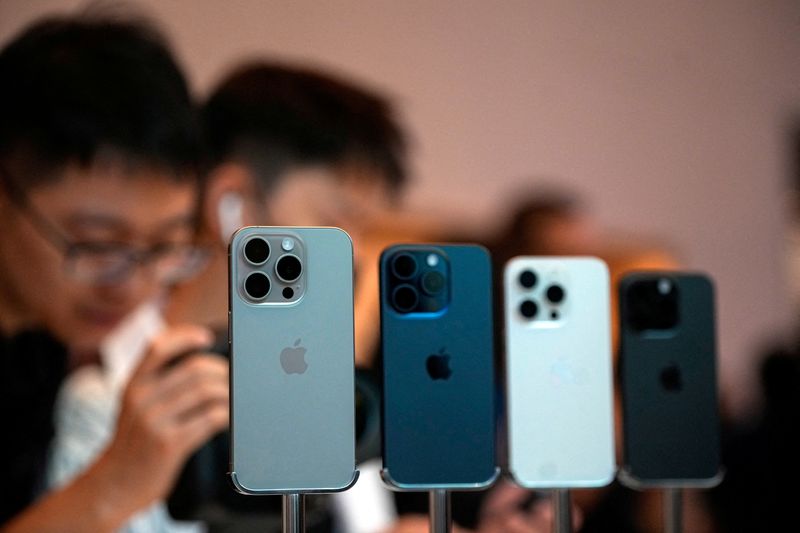Gold prices snap 4-day losing streak after Fed rate cut, Trump-Xi meeting
Investing.com-- Apple Inc (NASDAQ:AAPL) saw its smartphone shipments in Mainland China drop sharply by 25% year-on-year in the fourth quarter of 2024, according to a research report from Canalys.
Despite shipping 13.1 million units during its traditional high-demand quarter, Apple faced stiff competition from domestic brands, causing its market share to fall to 17%, down from 24% a year earlier, Canalys report stated.
This decline underscores the growing pressure on Apple as Chinese competitors, such as Huawei and Xiaomi (OTC:XIACF) Corp (HK:1810), continue to strengthen their foothold in the premium smartphone segment.
The overall Mainland China smartphone market showed signs of recovery in 2024, with annual shipments growing 4% to 285 million units, following two years of decline. Canalys attributed this growth to strategic investments, technological innovation, and government subsidies, which helped stimulate demand across all price segments.
In the fourth quarter of 2024 alone, shipments rose 5% year-on-year to 77.4 million units, driven by year-end promotions and high-end product launches. Vivo led the market for the year with a 17% share, shipping 49.3 million units, followed closely by Huawei with 46.0 million units, which recorded a robust 37% growth year-on-year.
Xiaomi also performed strongly in Q4, shipping 12.2 million units, marking the highest annual growth among top vendors at 29%. OPPO secured fifth place with 10.6 million units shipped, achieving an 18% increase from the previous year.
Canalys analysts highlighted that the recovery was "structurally healthy," driven by value-added products and innovation, including foldable designs and advancements in AI-powered operating systems. Looking ahead, the market is expected to surpass 290 million units in 2025, supported by favorable macroeconomic conditions and further government subsidies, according to Canalys.
The report underscores the intensifying competition in China’s smartphone market as domestic players ramp up their offerings to challenge Apple's dominance in the high-end segment.
